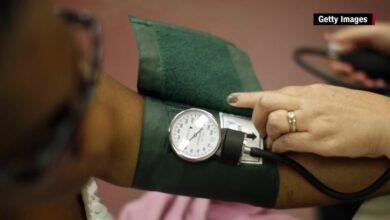
Giving workers adjustable-height desks may contribute to less sedentary time in the office, a small US study suggests.
Researchers found that people with the sit-stand desks spent about 60 minutes more on their feet during the workday and 66 fewer minutes sitting down than their colleagues with ordinary desks.
“I wasn’t surprised that they stood more as that is the sole purpose of the desk, but I was surprised by how much more they stood, especially after having the sit-stand desks for well over a year,” said lead study author Lucas Carr, a researcher at the University of Iowa in Iowa City.
“These findings suggest that the novelty of these desks doesn’t wear off right away, but rather that employees continue to use them long-term,” Carr added by email.
For the study, published in the American Journal of Preventive Medicine, researchers used motion trackers on 69 middle-aged, mostly female employees of a company in the Midwest over five days to see how much time they spent sitting, standing and walking around the office.
The people using sit-stand workstations had typically had them for an average of nearly two years and the workers using traditional desks had been using the same one for more than six years.
With adjustable desks, in addition to standing more, workers appeared to walk more and expend more energy on physical activity over the course of the day, but the differences were so small they might have been due only to chance.
Plenty of research has shown the benefits of physical activity, and the potential health hazards of an extremely sedentary lifestyle. Carr and colleagues designed the current study to see if sit-stand desks might be linked to lasting changes in how many hours workers spent in their chairs.
While they did find the sit-stand desks linked to less sedentary time, they also found that most of the extra time people spent out of their seats was devoted standing still.
The study team looked as well at whether the extra standing and walking translated into better health by measuring markers linked to heart disease and diabetes like blood fats, body weight and waist circumference. There were no differences based on desk type, although more steps taken during the day was linked to slightly lower blood pressure.
A shortcoming of the study, the authors acknowledge, is its small size and reliance on a group of predominantly middle-aged, overweight white women at a single workplace.
Still, as a growing body of research now links sedentary time to a number of bad health outcomes, the current findings offer more evidence that modifications to the modern work space might effectively limit the time workers spend sitting down, said Bethany Barone Gibbs, a researcher in health and physical activity at the University of Pittsburgh.
Even without sit-stand desks, there are still plenty of things workers can do to decrease sedentary time during the day, noted Dr. Francisco Lopez-Jiminez, a cardiology researcher at the Mayo Clinic in Rochester, Minnesota, who wasn’t involved in the study.
“There are many ways to stand at work and to be active at work, and many of those things don’t require any special equipment,” Lopez-Jiminez said by email. “Most buildings have stairs to use, long hallways to walk and people can be creative adapting their desk with simple ways to raise the monitor.”




